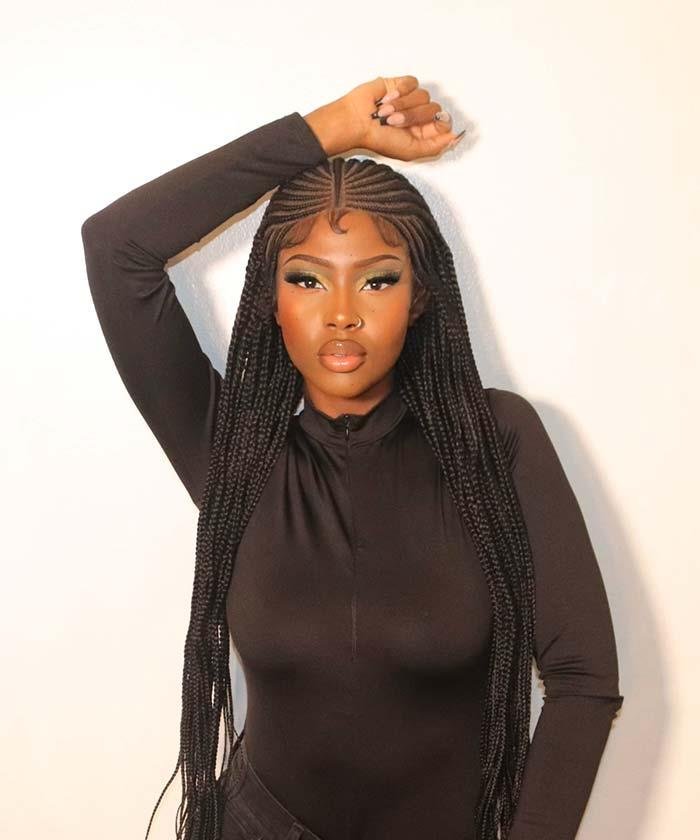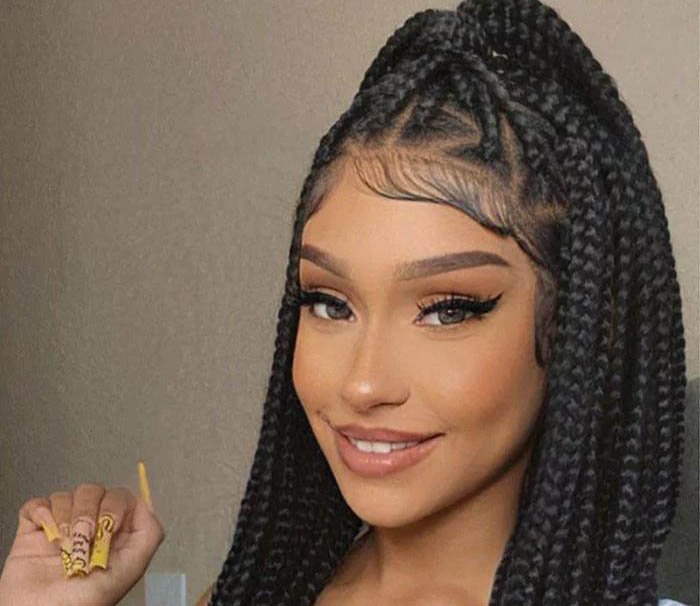As an African-American woman, my hair has always been an important part of my cultural identity and self-expression. Like many black women, I grew up getting my hair braided by my mom and sitting between other women’s knees for hours at local hair salons. Braiding styles like cornrows, box braids, and goddess braids styles weren’t just hairstyles – they represented generations of black women passing down knowledge and craft to their daughters. Braiding allowed moments of bonding and womanly community. Beyond aesthetics, it wove our shared history and looked to our origins.
In recent years, tribal braids have emerged as one of the most popular protective styles for black women. With their intricate designs and connection to African culture, tribal braids let me celebrate my heritage through hair. In this article, I’ll explore the origins, meanings, and my personal experiences with tribal braids. How are they different from other black braiding techniques? What cultural significance do they hold? And how does wearing tribal braids empower me as a black woman today? Let’s dive in!
The Origins and Meaning of Tribal Braids
Unlike cornrows or box braids, tribal braids actually originate from traditional African hairstyles and are less common in African American culture. They refer to the Ultra-thin, rope-like braids that lay flat to the scalp in geometric or zig-zag patterns. Tribal braids get their name from being inspired by braiding techniques of the Masai, Fulani, and other ethnic groups in Africa.
In many African cultures, braided hairstyles carry important meanings. Elaborate braids conveyed marital status, age group, wealth, and rank within the community. Braiders would weave seeds, shells, and beads into the hair to reflect personal stories. For many, tribal braids represent a celebration of culture and link to their ethnic identities. The choice to braid tribal styles today embraces natural African beauty in a society where Eurocentric looks often get prioritized.
My Personal Journey with Tribal Braids
I first discovered tribal braids a few years ago when searching for a lower maintenance protective style. I was drawn to the intricate, almost cursive-like patterns that looked like beautiful cultural artwork on the head. After some research, I realized just how meaningful this technique is for many black women as a connection to African ancestry.
For my first tribal braiding appointment, I felt almost this spiritual sisterhood as another black woman cornrowed neat rows along my scalp before intricately weaving the cascading braids. As she sectioned and started each braid, I felt mesmerized by the handiwork and care going into the style.
Once finished, I was stunned by how stunningly they complemented my facial features. The braids felt like an extension of my being and a form of artistic self-expression. I carried my head high, proudly wearing a heritage passed down from generation to generation on the African continent.
Tribal Braids for Cultural Celebration and Creative Expression
Since that first transformative experience, I’ve come to see tribal braids as a celebration of my blackness. The choice to braid tribal styles lets me honor my ancestors who braided not just for beauty but for ceremony and storytelling. By creatively pairing tribal braids with modern clothing styles and accessories, I’m fusing African tradition with my contemporary identity.
Some of my favorite looks have included:
Goddess braids styles adorned with cowrie shells and beaded tips for a festival. The look made me feel in touch with my roots.
Thin, neck-grazing tribal braids with thread wrapped through the ends, giving me an elevated yet bohemian vibe.
Jumbo tribal braids styled in a curly updo for tropical vacation. I loved the texture contrast of sleek braids and loose curls.
Edgy micro tribal braids with blunt bangs and hair jewelry. This made me feel fierce and powerful.
Whether worn for a special event or my daily style, tribal braids let me celebrate and honor my blackness through hair. The artistry empowers me to proudly embrace my natural beauty.

The Sisterhood and Bonding of Getting Tribal Braids
Beyond just wearing tribal braids, the experience of actually getting them installed at African braiding shops is just as meaningful. There’s a special communal spirit and intimacy as groups of black women congregate for hours, getting their hair intricately braided while laughing, bonding, and passing time together.
I remember recently getting micro tribal braids installed for over 8 hours straight. By hour 3, the soft yet steady tugging on my scalp lulled me into a meditative state. Around me, children played, women shared stories, and old friends reunited. While time-consuming, the end result was dramatically beautiful. My petite braider had turned my hair into a tapestry of swirls and shapes, each braid carefully spun by hand.
“Girl, you look like an African queen!” my stylist exclaimed as she finished. And I truly felt that power. Beyond just admiring my new braids, other women at the shop seemed to simply appreciate the collective experience we all shared that day. We came as individuals and left as sisters – our patience and community intertwined like the braids on our heads. That sense of solidarity through hair left me changed, more connected to these women and my ancestry.
The Double Standards Around Tribal Braids
However, I quickly learned that not everyone perceives tribal braids as an empowering celebration of blackness. As tribal braids exploded in popularity, some voiced criticism of non-black people wearing the style, arguing cultural appropriation. Others condemned the braids on black women as “ghetto” or unprofessional in schools and workplaces.
I found this deeply disappointing. Tribal braids originate from ancient African culture – so why were they stigmatized or off-limits now? Black women were judged for embracing styles reflecting their very identity. No one critiqued other cultures wearing their traditional hairstyles. Once again, blackness got coded as too different, too unruly, too radical.
But these judgments only strengthened my commitment to proudly wearing tribal braids whenever I choose. By creatively rocking tribal braids as an unapologetic black woman, I’m challenging rigid Eurocentric standards of beauty and professionalism. My braids communicate “This is who I am and you will respect it”. And when other sisters compliment my look, it bonds us in shared identity and resilience. That collective pride outweighs any personal discomfort of judgment or exclusion.

Tribal Braids as a Symbol of Freedom and Empowerment
Ultimately, I consider tribal braids more than just a hairstyle. Each patterned braid symbolizes generations of black women’s resilience, strength and our refusal to have our identities dictated by society. Braiding keeps our history alive through touch and tradition. The designs on our heads tell stories no textbook could ever capture.
In tribal braids, I carry the spirits of my female ancestors and their tireless fight for self-love and freedom. This protective style reminds me I descend from African queens who built civilizations, led kingdoms, and nurtured future generations. I honor them by embracing tribal braids without shame or compromise, flaunting our shared legacy.
So to all my sisters who choose to creatively express yourselves through tribal braids – I see you. I stand with you. Our braids weave far beyond the aesthetic. They speak to the world who we are, where we come from, and the pride we carry in our hearts. Our braids bear witness to the beauty, strength, and joy of black womanhood across generations.
So continue telling your story through braids. Let them be soft as a whisper or loud as a battle cry. No one can take that truth and power from you. The patterns on our head lead us home, back to who we are at our core. Our braided bonds will prevail through it all.


